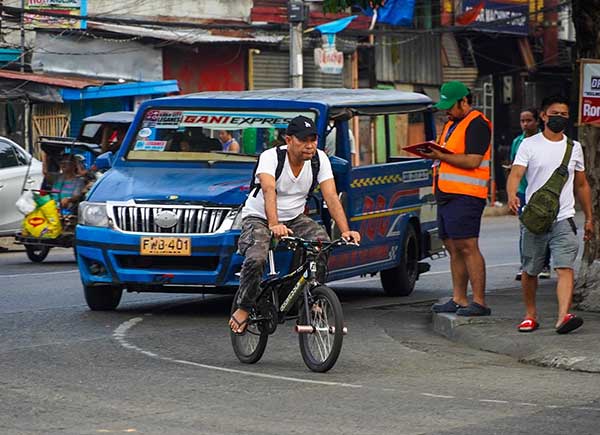
By Joseph Bernard A. Marzan
Iloilo City joined other areas in the country on Wednesday, June 5, in counting trends related to cycling as a mode of transportation as it participated in the privately-led “Bilang Siklista.”
More than 40 volunteers from various sectors were stationed at the following major intersections in the city:
-University of the Philippines Visayas (Benigno Aquino Avenue and General Luna Street)
-Taft North (Benigno Aquino Avenue and El 98 Street)
-Molo Plaza (San Pedro, Locsin, and Avanceña Streets)
-Dulonan (Avanceña and Quezon Streets)
-Mandurriao Plaza (Oñate de Leon and R. Mapa Streets)
-Ungka (Benigno Aquino Avenue and Old Lopez Jaena Street)
-Jaro Plaza (E. Lopez and Burgos Streets)
-Baluarte Fishing Port (Infante and Rizal Streets)
-La Paz Plaza (Burgos and Huervana Streets)
-Muelle Loney Bridge and Provincial Capitol (Muelle Loney Street and General Luna Street)
The primary data collected focused on the volume of public bike use as a mode of transport, including relevant factors such as gender, helmet use, and cycling movement trends.
Iloilo City is the fifth area in the country to conduct the count, following the cities of Butuan, Marikina, Muntinlupa, and Cagayan De Oro, which held their own counts on World Bicycle Day, June 3.
In Iloilo City, the bike count was organized as a partnership among the Iloilo Folding Bike Riders (iFOLD), Iloilo Bike Ed for Road Safety, the Department of Public Works and Highways-Region 6, the Iloilo City Government, and the Iloilo Bike Council.
Architect Wilfredo Sy Jr. of the city government said the data collected will help them understand commuting trends better and improve existing bike lanes and sidewalks.
He added that this year’s bike count would provide “a more accurate snapshot of what happens during the selected hours in the specified intersections,” as well as changes in helmet use and gender count.
“The primary reason is the establishment of data and trends to be used as baseline information in order to justify funding for public infrastructures like bike lanes and improved sidewalks. This also helps the LGU to adopt consistent, uniform, and official data collection and analysis for active transport and urban mobility,” Sy told Daily Guardian.
“The activity also facilitates close collaboration and active participation of citizen volunteers with LGU personnel. From the private sector, their inclusion in the activity provides a venue for their suggestions as bicycle commuters. From the LGU side, this helps personnel understand the dynamics of daily commuters,” he added.
The last bike count in 2022, conducted over four Fridays in June, recorded an average of 22,114 cyclists per day in Iloilo City.
Based on their sex, 95.6 percent of the cyclists were male, 4.3 percent were female, and 0.1 percent were undetermined. The same count indicated that only 17.16 percent of cyclists used helmets, while 82.84 percent did not.
The annual Bilang Siklista bike count was started in 2021 by the Mobility Awards to count people using bicycles as transportation, with the data aimed at helping cities understand cycling patterns and hopefully push for better, bike-friendly policies.
Other bike counts will be held in Mandaluyong City (June 6), Baguio City and Naga City (June 21), Cebu City (June 21 and 22), Cordova, Cebu, Pasig City, and Taguig City (June 24), Quezon City (June 24 to 30), and Manila (June 25).
















